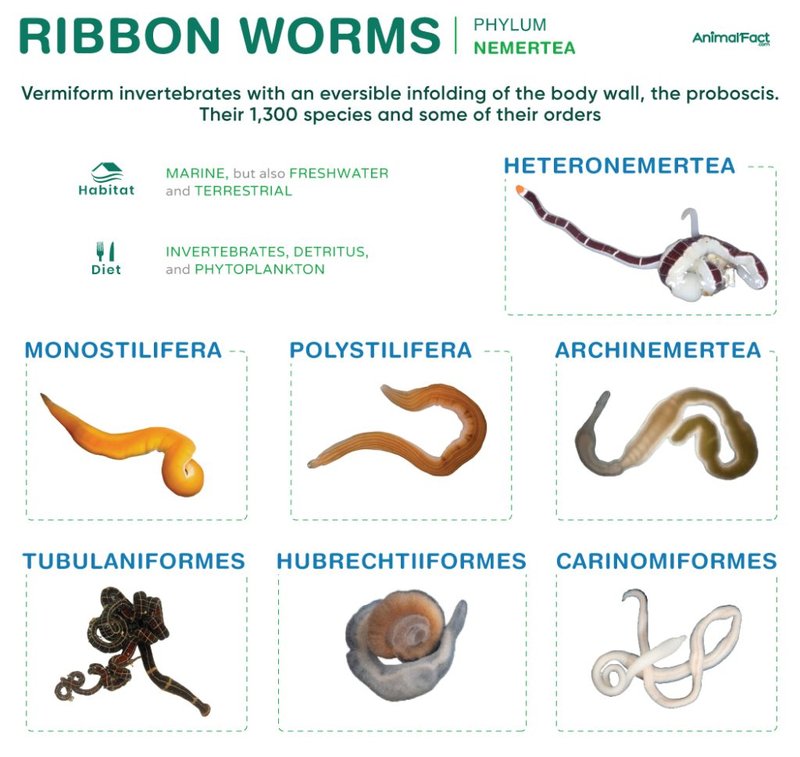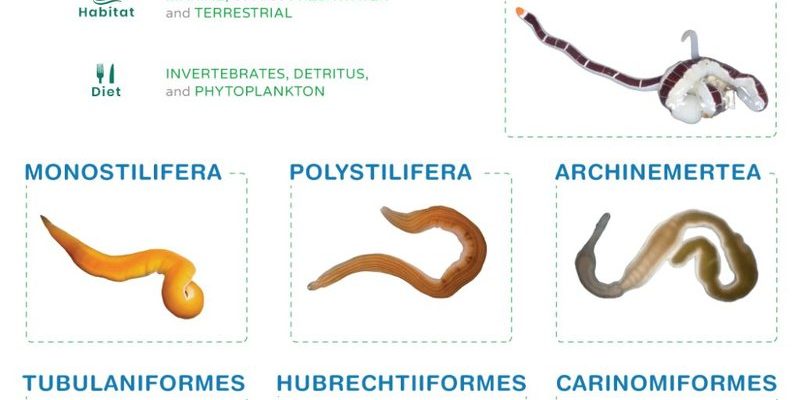
Imagine diving into the ocean or walking along a beach, spotting a strange, ribbon-like creature gracefully undulating in the tide. These critters aren’t just pretty to look at; they have some really interesting features and behaviors that make them stand out in the marine world. So, let’s dive deeper and explore what makes ribbon worms so unique!
What Are Ribbon Worms and Nemerteans?
Ribbon worms, or nemerteans, are a fascinating group of marine animals known for their long, slender bodies. They can range in size from just a few millimeters to several meters long! These creatures are soft-bodied and usually brightly colored, which can make them look like underwater ribbons flowing in the current. Nemerteans belong to a phylum called **Nemertea**, which is distinct from other marine organisms.
One of the most notable features of ribbon worms is their unique feeding system. They have a specialized structure called a **proboscis**, which is like an extendable tongue that can shoot out to capture prey. Imagine a slingshot—that’s pretty much how they catch their food! Whether it’s small fish or other invertebrates, ribbon worms are opportunistic feeders and play an important role in their ecosystems.
Where Do You Find Ribbon Worms?
You’ll typically find ribbon worms in a variety of marine environments, from shallow coastal waters to deeper ocean floors. They’re often buried in sand or mud, making them a bit tricky to spot. Some species prefer rocky areas or kelp forests, while others may even inhabit freshwater environments—yes, they’re not limited to salty seas!
If you’re ever beachcombing or tidepooling, keep an eye out for these creatures. Sometimes, they can be seen crawling out from their burrows, especially during low tide. Their slimy bodies may glisten in the sunlight, making them a fascinating find for anyone curious about marine life.
The Colorful World of Ribbon Worms
Colors can vary significantly among species. Some are bright neon greens or pinks, while others might blend in with their surroundings. This vibrant color can serve multiple purposes. For instance, it can help with camouflage or, conversely, signal to predators that they’re toxic. It’s nature’s way of saying, “Look but don’t touch!”
Let’s talk about one particular species: the **Lineus longissimus**. This is one of the longest ribbon worm species and can reach lengths of up to 30 meters! That’s longer than a blue whale! Think of it as the equivalent of a sea snake, yet it’s completely different in its anatomy and lifestyle.
How Do Ribbon Worms Reproduce?
When it comes to reproduction, ribbon worms have some interesting strategies. Most species can reproduce both sexually and asexually, which is quite handy for survival. In sexual reproduction, male and female ribbon worms release their sperm and eggs into the water, where fertilization occurs externally. The larvae then drift with the currents before settling down and growing into adults.
On the other hand, some ribbon worms can reproduce asexually through a process called **fragmentation**. This means that if a worm gets cut into pieces, each piece can grow into a new worm! Imagine if a single piece of spaghetti could turn into multiple strands—nature really can be astonishing.
The Ecological Role of Ribbon Worms
Ribbon worms play an essential role in their ecosystems. As predators, they help control the populations of smaller marine organisms, which keeps the food web balanced. Moreover, their presence in the sediment contributes to nutrient cycling, as their feeding activities help stir up the substrate and release nutrients back into the water.
They also serve as a food source for various predators, including fish and birds. So, in a way, ribbon worms are both hunters and prey, fitting neatly into the intricate fabric of marine life.
Threats and Conservation Efforts
Despite their ecological importance, ribbon worms face threats from habitat destruction and pollution. Coastal development can lead to the loss of their natural habitats, while pollution can impact their health and reproductive success.
Conservation efforts are essential to protect these intriguing creatures and their ecosystems. Promoting clean oceans and responsible fishing practices can help maintain healthy populations of ribbon worms and the marine environments they inhabit.
Are Ribbon Worms Edible?
You might be wondering, “Can I eat ribbon worms?” The answer is a bit of a mixed bag. While some cultures do consume certain types of ribbon worms, it’s essential to be cautious. Many species can contain toxins that might not be safe for human consumption.
If you ever come across one while foraging, it’s best to exercise caution and avoid eating it. Always research and consult experts before trying out new marine foods, as the ocean can be unpredictable.
Ribbon worms, or nemerteans, are more than just odd marine creatures; they’re a vital part of ocean ecosystems. With their unique physical characteristics, fascinating reproduction methods, and essential ecological roles, they deserve a spot on the radar of anyone interested in marine life. Next time you find yourself near the water, take a moment to appreciate the beauty and complexity of these captivating creatures. You might just find that there’s a whole world of ribbon worms waiting to be discovered!

